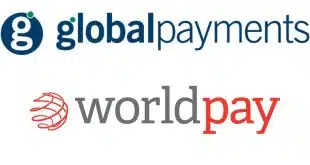For many restaurants, interchange fees are the third expense category after food and labor. Issuers pull some savvy tricks in the form of rewards cards, which consumers are drawn to and merchants can’t reject, though they face higher fees to carry the burden of the rewards. For quite a few merchants, this may loom as a crisis.
Putting tactics aside, the cost of payments authentication has been inching up, despite the ready availability of online tools. The reason is that the requirement to verify the personal identity of an online player is becoming more challenging, and more costly. While technology gives the security side a nice toolbox, it also helps the identity thieves, offering fraud options beyond what was available even very recently.
The security industry developed sophisticated means to assert the identity of an online identity claimant. These include photos, voice signature—and, at great cost, the means to distinguish between a person and an imposter. Now, though, comes the technology of artificial intelligence, giving fraudsters the tools to fake looks, voice, and behavior.
For many years, the biological signature was hailed as the knockout blow against fraudsters. The fingerprint is unique, the iris is unique, the palm is unique—it’s a slam dunk! Not so fast. What online security software does is to compare a fingerprint reading with a stored signature. The software cannot tell whether what is billed as a “reading signature” is indeed fresh from the person’s thumb or replayed by a fraudster. So, back to square one.
Projecting this trend forward, the cost of authentication is going up, and the rate of both positive and negative mistakes is mounting, too. The more this goes on, the greater is the pressure for a fundamental change in the business of payment authentication.
So, ignore the payor. Focus on the payment—the digital coin.
What is so powerful about the idea of a digital coin is the notion of identity. A physical coin has a clear material identity. Digital money in its classic form is nothing but a number in a particular storage location, no identity. The emergent digital money is made of cyber coins bearing a unique identity.
This identity aspect applies to a wide variety of coin options. A bitcoin coin is unique and a BitMint coin is unique, though these two crypto coins are vastly different. When a coin has an identity, its transfer from a payor to a payee can be verified without any clue who the payor and payee are.
Any viable digital coin has built-in protection against double spending. This is a subtle but fundamental aspect. In today’s payment climate, the payor does not pass money directly to the payee. The payor is passing his credentials, which, when verified, okay the account-to-account payment. When these payment credentials are stolen, they can be used for fraud over and over again.
There is no equivalent to this pattern with coin authentication. The high cost of payor-identity authentication is due to the prevailing fraud canvas, now so augmented with the flood of AI tools. Card issuers will have to pass this cost to merchants, so at some point even very conservative merchants will turn to direct digital coin payment. At BitMint, we get calls from merchants who were once intimidated by our digital money technology, but now are much more interested.
The credit card was a remarkable payment innovation that had a long and very profitable ride. Its presence will be felt for years to come. But a new paradigm is coming. It’s only awaiting bold pioneers to lead the way.
—Gideon Samid gideon@bitmint.com





